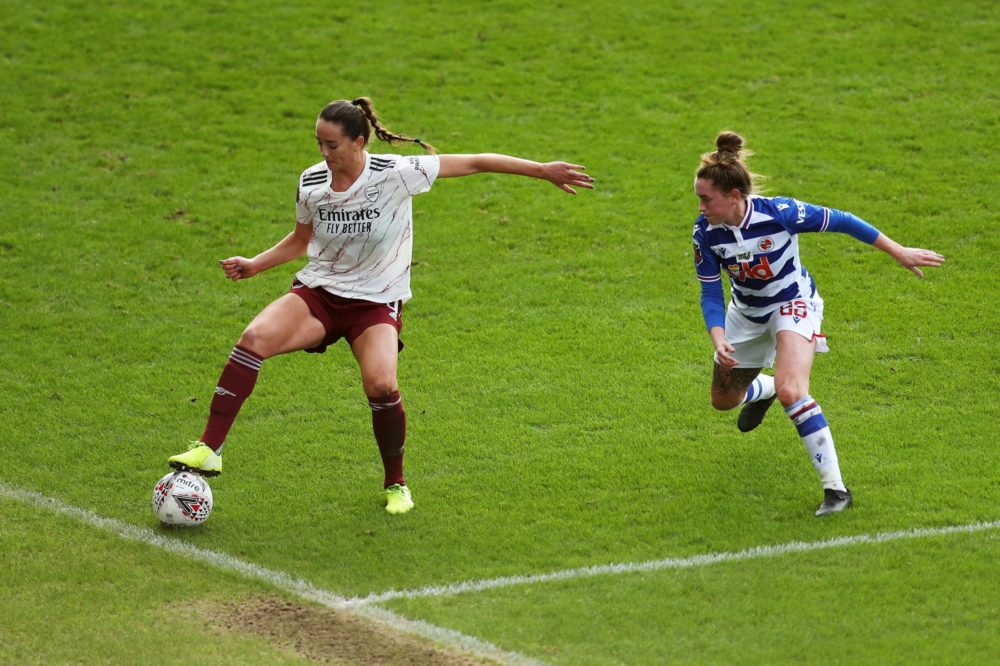As expected, Arsenal women had a very quiet January transfer window with one new signing and one player leaving the club on loan.

Arsenal women transfer window – In
Anna Patten came back home after finishing her studies in the USA, while youngster Ruby Mace has gone on loan to Birmingham with a dual registration that allow her to play with the Arsenal Academy team.
Therefore, the Arsenal squad for the second part of the season will have 22 professional players which is a good size squad, if there are no injuries of course.
- GK (3): Zinsberger, Williams, Stenson
- DF (8): Maier, Maritz, Williamson, Patten, Beattie, Wubben-Moy, Schnaderbeck, Catley
- MF ( 6): Wälti, Gut, Little, Roord, Nobbs, van de Donk
- FW (5): Evans, Mead, Miedema, Foord, McCabe
If everyone is fit, Joe Montemurro will have a few headaches to select his starting 11 and will have to leave two players out of the matchday squad, one being our third keeper and an outfield player.
Looking at the impact of the new players that arrived in the summer transfer window, it is interesting to note that Malin Gut is the player with the most minutes played up until Christmas among all the new signings, followed by Noelle Maritz.
I have used for reference the total number of minutes played in all competitions by all the professional players at the club for the 2019/20 season until the Christmas break for the 2020/21 season.
On the left side of the table are the players that left the club and their minutes played, on the right side the new arrivals in the Summer.

What is really interesting is the impact of those new players in terms of overall game time for the players that were already there last season. There are some surprising numbers, but some figures are distorted by injuries.
As we all know, Arsenal players are very much either injury-prone or unlucky with injuries. So, a lack of playing time is sometimes due to not being available, not because the manager has dropped the players.

Lisa Evans is the player that has lost the most game time (in percentage) going down from 82% to a meagre 26%. She has lost her starting place, mainly due to injury as she missed seven games in a row out of 16. She had started only three games before Christmas and was sorely missed in the attacking scheme on the right side with her overlaps.
Jordan Nobbs is the second player with the most game time lost, going down from 70% to 39%. Like Lisa Evans she missed seven games in a row, although we have to remember that last season she was slowly coming back from her ACL injury and did not have the expected playing time because of it.
Jill Roord is the third player with the most game time lost, going from 75% to 45%. She missed six games out of 16 due to an injury as she was in great form prior to her injury sustained with the Netherlands.
So, the first player in the list that has lost a lot of game time because of management choices is Leonie Maier. She has only missed one game due to injury, but her game time went down from 60% to 36%. Maier was a squad player used in rotation last season and has now become an “end of the bench” player type.
Danielle van de Donk’s status has also changed, going from a regular starter with 83% to a kind of rotation player now with 66% of the overall game time. Still a high number, but no longer an automatic starter when everyone or nearly everyone is fit to play.
The player with the biggest increase in minutes percentage is Caitlin Foord because she arrived in the January transfer window and won a starting 11 place with her high and consistent performances. She went up from 7% to 81%.
The other player with a serious game time increase since the summer window is Lia Wälti up from 52% to 72% this year. She is back to her 2018/19 levels, more or less, as she spent a lot of time last year on the treatment table. Hence missing 48% of game time last season.
Arsenal women transfer window – Conclusion
Overall, it is hard to assess the real impact of the summer signings, because three of them actually got long term injuries and little playing time. They were expected to be in the starting 11 and make an impact, but it has not happened yet for Catley and Williams, while Maritz has been superb when available.
Next summer might be very busy for the Gunners in terms of ins and out and all will depend on Champions League qualification, as some players might move away if we don’t make the premium club tournament again.

